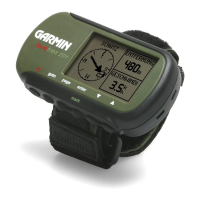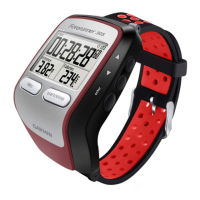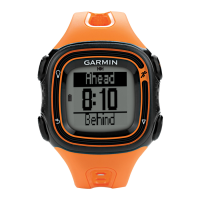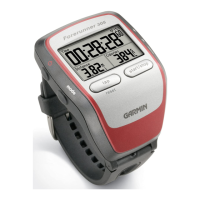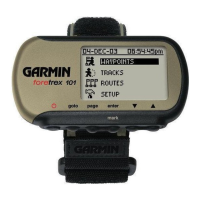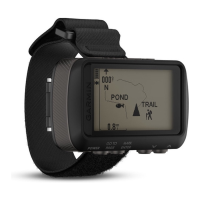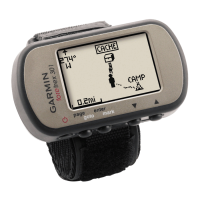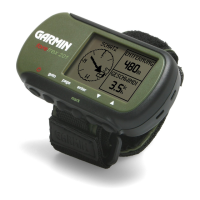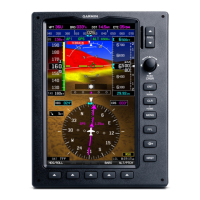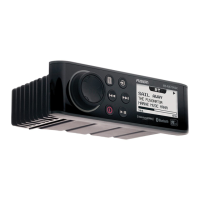
Do you have a question about the Garmin FORERUNNER 255 MUSIC and is the answer not in the manual?
| Resolution | 260 x 260 pixels |
|---|---|
| Display Type | Sunlight-visible, transflective memory-in-pixel (MIP) |
| Weight | 49 g |
| Battery Life (Smartwatch Mode) | Up to 14 days |
| Battery Life (GPS Mode with Music) | Up to 6.5 hours |
| Battery Life (GPS Mode) | Up to 30 hours |
| Battery Life (All-Systems GNSS Mode) | Up to 25 hours |
| Water Rating | 5 ATM |
| Music Storage | Up to 500 songs |
| Connectivity | Bluetooth, ANT+, Wi-Fi |
| Memory/History | 200 hours of activity data |
| Dimensions | 45.6 x 45.6 x 12.9 mm |
| Compatibility | iPhone, Android |
| Storage | 4 GB |
| Display Size | 1.3" (33.0 mm) diameter |
| Sensors | Barometric altimeter, Compass, Gyroscope, Accelerometer, Thermometer, Pulse Ox |
Guide to initial setup tasks for full feature use.
Steps to start recording an activity, including GPS acquisition.
How to stop, save, resume, or discard a recorded activity.
Steps to start and record a running activity.
Overview of swimming capabilities and notices.
Recording open water swim data like distance and pace.
How to record pool swims and record intervals.
How to record strength training sets and reps.
Using specialized timers for high-intensity interval training.
Steps to create a new custom activity from scratch or by copying.
How to change the order, remove, or add glances.
Explains how Body Battery level is calculated and interpreted.
Explanation of VO2 max. and how it's calculated.
How the watch estimates target race times based on VO2 max.
How wrist heart rate readings determine heart rate variability status.
How the watch estimates FTP, requiring heart rate and power meter.
Detailed explanation of VO2 max. as an indicator of athletic performance.
Requirements and steps to get a VO2 max. estimate for running.
Requirements and steps to get a VO2 max. estimate for cycling.
How to view predicted race times based on VO2 max. and training history.
How sleep and wrist HR determine HRV status.
Real-time assessment of ability to perform compared to fitness level.
How to get an FTP estimate, requiring HR monitor and power meter.
Step-by-step guide to perform a guided FTP test.
Explains lactate threshold and its importance for training.
How to perform a guided test to estimate lactate threshold.
Describes different training status levels (Detraining, Recovery, etc.).
Weighted sum of excess post-exercise oxygen consumption (EPOC).
Analyzes and distributes training load into aerobic and anaerobic categories.
Estimates how much time until full recovery for the next hard workout.
Measures activity impact on aerobic and anaerobic fitness.
How to customize the activities list and data screens.
How to set alerts for specific activities to reach goals or navigate.
Customize satellite systems used for GPS activities.
Customize map features and appearance for navigation.
Settings to manage battery life and extend usage.
General settings for language, time, backlight, sound, and more.
Enables real-time performance assessment during activities.
Instructions and tips for charging the device.
Solutions when the daily step count is not displayed.
Tips to improve the accuracy of step count readings.
How to resolve discrepancies between device and Garmin Connect step counts.
Reasons and solutions for inaccurate floors climbed data.
Steps to restart the watch if it becomes unresponsive.
How to reset all watch settings to factory defaults.
Tips and settings to extend the device's battery life.
Steps to troubleshoot phone connectivity issues.
Guide to manually pairing ANT+ sensors with the watch.
Tips for connecting Bluetooth headphones to the watch.
Solutions for intermittent music playback or disconnected headphones.
